<< Previous | Displaying results 5151-5200 of 6769 for "" | Next >>
Insignia of the 80th Infantry Division. The nickname of the 80th Infantry Division, the "Blue Ridge" division, reflects the home states of the majority of soldiers who formed the division during World War I: Pennsylvania, West Virginia, and Virginia. The Blue Ridge Mountains run through these three states.
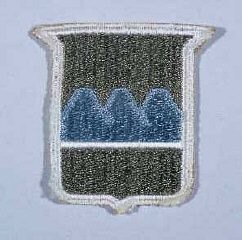
Prisoners at the time of liberation of the Ebensee camp, a subcamp of the Mauthausen concentration camp. This photograph was taken by US Army Signal Corps photographer Arnold E. Samuelson. Austria, May 7, 1945.
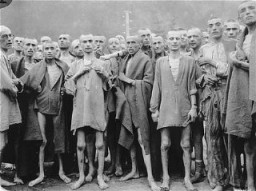
Four emaciated survivors sit outside in the newly liberated Ebensee concentration camp. Photograph taken by Signal Corps photographer J Malan Heslop. Ebensee, Austria, May 8, 1945.
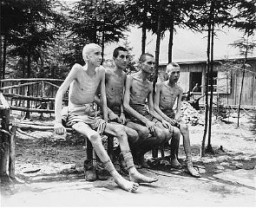
Emaciated survivors in the Ebensee subcamp of the Mauthausen concentration camp suck on sugar cubes provided by US soldiers upon the liberation of the camp. Photograph taken by Signal Corps photographer J Malan Heslop. Ebensee, Austria, May 8, 1945.
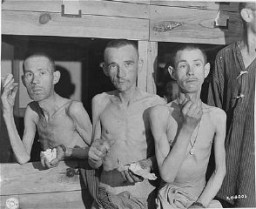
Liberated prisoners at the Ebensee camp. Too weak to eat solid food, they drink a thin soup prepared for them by the US Army. Photograph taken by US Army Signal Corps photographer J Malan Heslop. Austria, May 8, 1945.
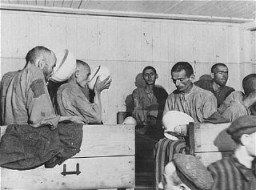
Insignia of the 12th Armored Division. "Hellcats, " the winning entry in a division contest for a nickname held in early in 1943, symbolized the 12th's toughness and readiness for combat.
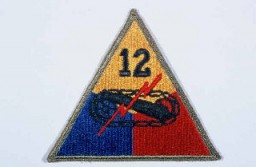
US troops view corpses of prisoners massacred by SS guards in a wooded area near the Kaufering IV subsidiary camp of the Dachau concentration camp. Landsberg- Kaufering, Germany, April 30, 1945.
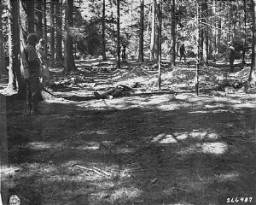
A view of barracks in the Kaufering network of subsidiary camps of the Dachau concentration camp. Landsberg-Kaufering, Germany, after April 27, 1945.

Forced laborers inside barracks soon after the liberation of Kaufering IV, part of a network of Dachau subcamps. Landsberg-Kaufering, Germany, 1945.
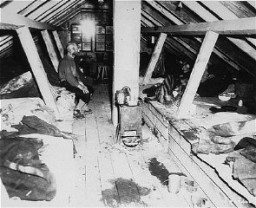
A survivor of Kaufering IV, one of the Dachau subcamps in the Landsberg-Kaufering area, with US soldiers after liberation. Kaufering, Germany, after April 27, 1945.
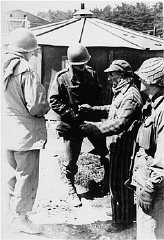
The entrance gate to Kaufering IV subcamp of Dachau. This photograph was taken after liberation. Near Landsberg, Germany, after April 28, 1945.
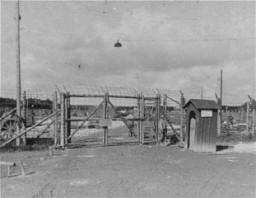
Forced laborers build the south wall of the foundation of the new Dachau satellite camp of Weingut I in Mühldorf . Germany, 1944.
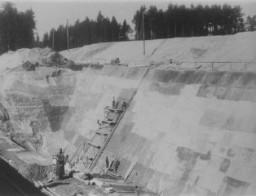
A US soldier stands guard as mayors and citizens of local towns view the corpses of inmates of the Rottleberode subcamp of Dora-Mittelbau, who were killed when the SS locked them in a barn and set it on fire. Gardelegen, Germany, April 18, 1945.
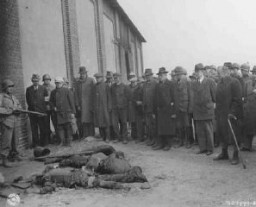
A sign at the military cemetery in Gardelegen in memory of the prisoners who were killed by the SS in a barn near the town. Germany, April 18, 1945.
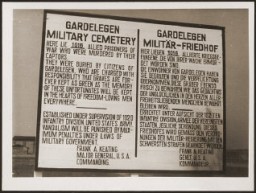
US troops inspect a barn on the outskirts of the town of Gardelegen that was the site of the massacre of over 1,000 concentration camp prisoners. Germany, April 14-18, 1945.

Barn on the outskirts of the town of Gardelegen that was the site of the massacre of over 1,000 concentration camp prisoners. Germany, April 16, 1945.
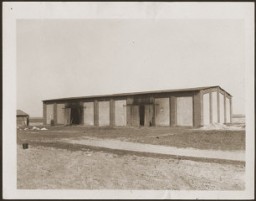
Bonde Gaza, a Hungarian musician who survived the Gardelegen atrocity, demonstrates to American soldiers how he managed to escape from the barn which the SS had set on fire. Germany, April 14–18, 1945.
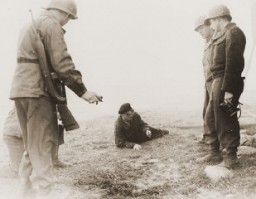
An American soldier kneels by the corpse of a prisoner on the roadside near Gardelegen. The prisoner was shot by the SS when he was too exhausted to continue on a death march. Germany, April 14-18, 1945.
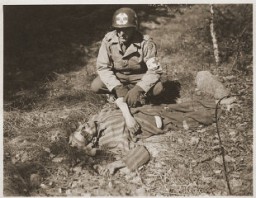
American soldiers look at the exhumed bodies of prisoners who were burned alive in a barn outside Gardelegen. Germany, April 14-18, 1945.
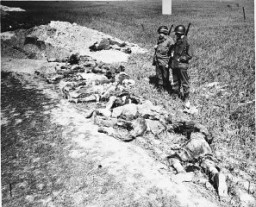
View of the wall surrounding the cemetery of the Hadamar euthanasia killing center. Jagged pieces of glass were placed on the wall to discourage observers. This photograph was taken by an American military photographer soon after the liberation of Hadamar. Germany, April 5, 1945.
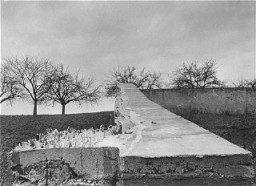
An American soldier stands guard in front of the Hadamar Institute. The photograph was taken by an American military photographer soon after the liberation. Germany, April 5, 1945.
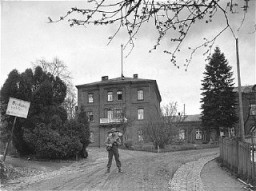
View of the Hadamar Institute. This photograph was taken by an American military photographer soon after the liberation. Germany, April 7, 1945.
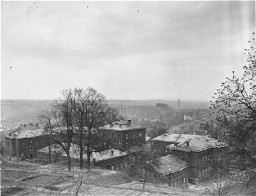
View of one of the mass graves at the Hadamar Institute. This photograph was taken by an American military photographer soon after the liberation. Germany, April 5, 1945.
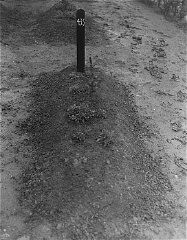
A US Army soldier views the cemetery at Hadamar, where victims of the Nazi euthanasia program were buried in mass graves. This photograph was taken by an American military photographer soon after the liberation. Germany, April 5, 1945.
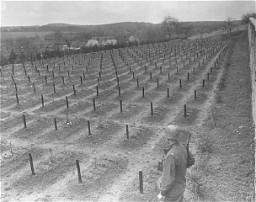
Exterior view of the Hadamar main building. The photograph was taken by an American military photographer soon after the liberation. Germany, April 7, 1945.
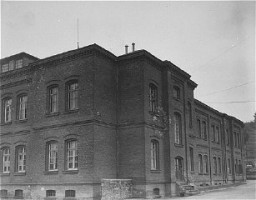
An American anti-aircraft gun, towed by a truck camouflaged with foliage, moves into position in the Hürtgen Forest to provide fire support against ground targets. November 6, 1944. US Army Signal Corps photograph taken by C A Corrado.
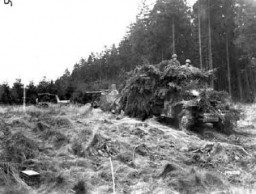
Mortar men of the 754th Tank Battalion fire an 81mm mortar at German positions during the heavy fighting in the Hürtgen Forest. December 15, 1944. US Army Signal Corps photograph taken by C. Tesser.

A soldier prepares to bed down for the night in a Belgian forest during the Battle of the Bulge. December 21, 1944. US Army Signal Corps photograph taken by J Malan Heslop.
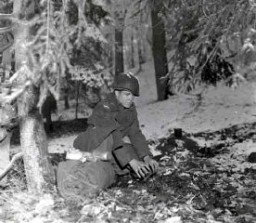
During the Battle of the Bulge, US troops move up to the front in open trucks in subzero weather to stop the German advance. December 22, 1944. US Army Signal Corps photograph taken by J Malan Heslop.
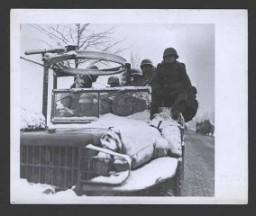
An American GI using his steel helmet to draw water from a stream during the Battle of the Bulge. December 22, 1944. US Army Signal Corps photograph taken by J Malan Heslop.
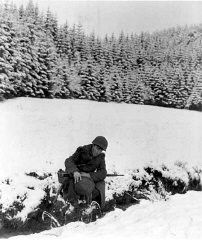
John Perry, a movie photographer with Unit 129, films GIs of the 290th Infantry Regiment, 75th Infantry Division, and 4th Cavalry Group ferreting out German snipers near Beffe, Belgium during the Battle of the Bulge. Twelve Germans were killed. The scene was photographed by Carmen Corrado of the 129th. January 7, 1945. US Army Signal Corps photograph taken by C.A. Corrado.
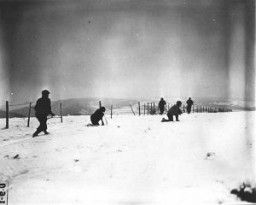
Infantryman of the US 89th Division cross the Rhine River in assault boats near St. Goar, Germany. March 26, 1945. US Army Signal Corps photograph taken by A. Graham.
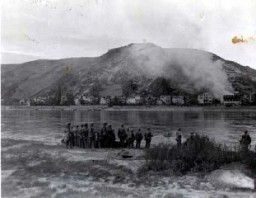
GIs keep low inside a landing craft during an assault across the Rhine at Oberwesel, Germany. March 22, 1945. US Army Signal Corps photograph.
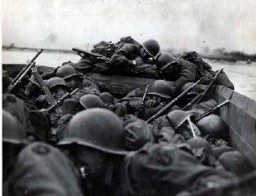
US Army Signal Corps photographers from Combat Unit 123 photograph ruins in the city of Naumburg, Germany. Photograph taken by J Malan Heslop. April 10, 1945.
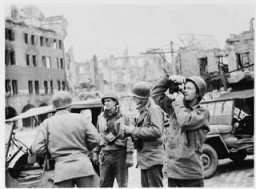
US Army Signal Corps photographer J Malan Heslop types photo captions. France, 1944.
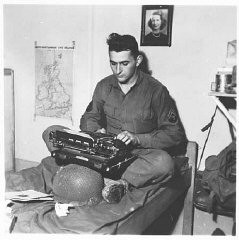
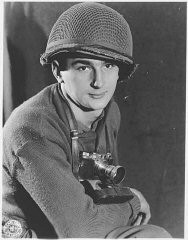
Portrait of US combat photographer Arnold E. Samuelson. France, 1944-1945. Samuelson took some of the best known photographs of Holocaust survivors upon the liberation of the camps.
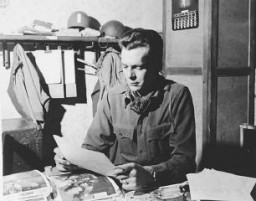
John Perry, a movie photographer with Unit 129, films GIs of the 290th Infantry Regiment, 75th Infantry Division, and 4th Cavalry Group ferreting out German snipers near Beffe, Belgium, in early January 1945. Twelve Germans were killed. The scene was photographed by Carmen Corrado of the 129th. January 7, 1945. US Army Signal Corps photograph taken by C.A. Corrado.
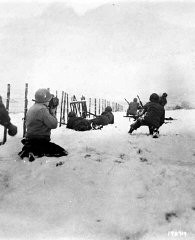
Sergeant Alexander Drabik, the first American soldier to cross the bridge at Remagen, receiving the Distinguished Service Cross for his heroism. April 5, 1945. US Army Signal Corps photograph taken by J Malan Heslop.
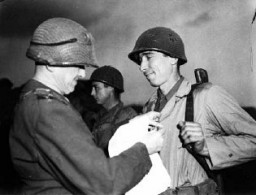
German prisoners file across the Rhine as American supply trucks move forward toward the front. March 26, 1945. US Army Signal Corps photograph.
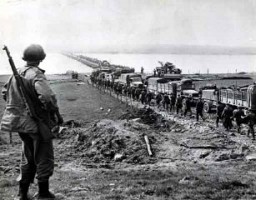
Surrendered Germans in Austria. May 1945. US Army Signal Corps photograph taken by J Malan Heslop.
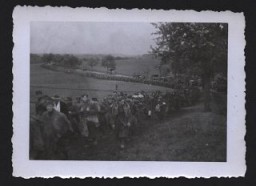
American soldiers walk along an open mass grave for the of victims of the Nordhausen concentration camp. US army officers ordered the residents of Nordhauen to prepare the grave for the burial of the victims. Nordhausen, Germany, April 13–14, 1945.
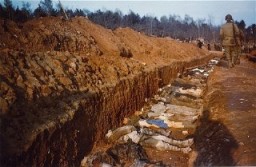
Soon after liberation, British medical officers begin disinfection of camp survivors. Bergen-Belsen, Germany, May 1945.
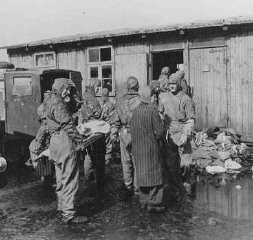
Soon after liberation, camp survivors wait for rations of potato soup. Bergen-Belsen, Germany, April 28, 1945.
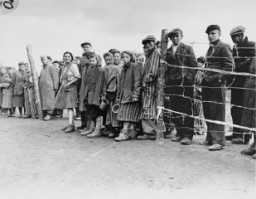
Soon after liberation, camp survivors walk amidst dead bodies. Bergen-Belsen, Germany, after April 15, 1945.
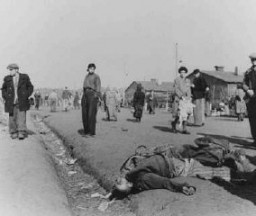
Soon after liberation, women camp survivors prepare food near piles of dead bodies. Bergen-Belsen, Germany, after April 15, 1945.
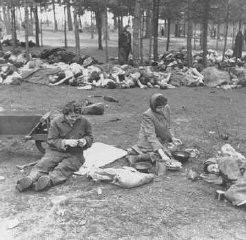
Naftali Saleschutz (Norman Salsitz) prepares cement for the foundation of a sukkah (a hut-like structure used to celebrate the Jewish holiday of Sukkot). Kolbuszowa, Poland, 1937.
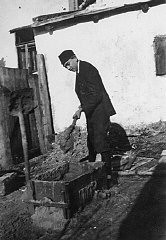
Members of the Saleschutz family do laundry in the yard of their home. Kolbuszowa, Poland, 1934.

A survivor stokes smoldering human remains in a crematorium oven that was still lit in the Dachau camp. Photograph taken upon the liberation of the camp. Dachau, Germany, April 29-May 1, 1945.
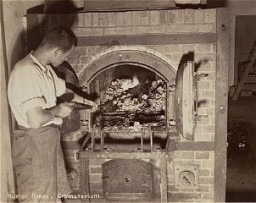
View of a section of the newly liberated Dachau concentration camp as seen through the barbed-wire fence. Dachau, Germany, May 1945.
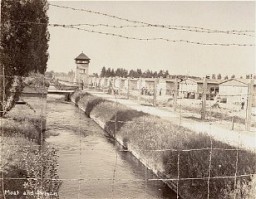
We would like to thank Crown Family Philanthropies, Abe and Ida Cooper Foundation, the Claims Conference, EVZ, and BMF for supporting the ongoing work to create content and resources for the Holocaust Encyclopedia. View the list of donor acknowledgement.